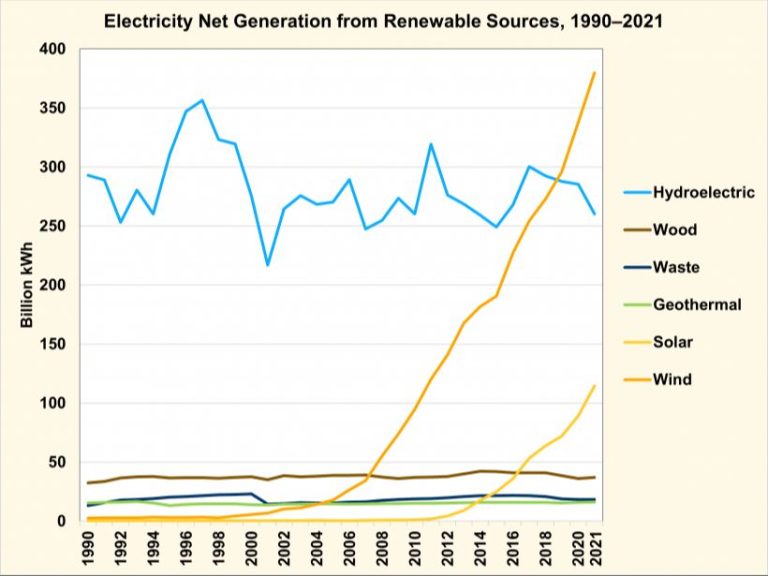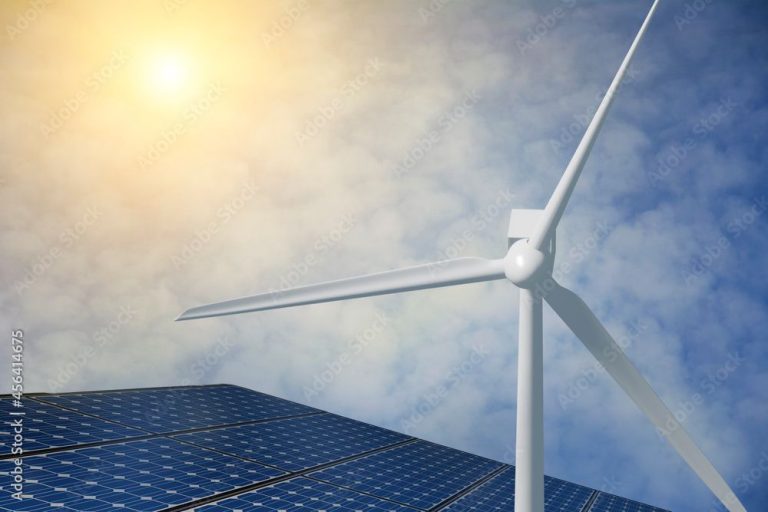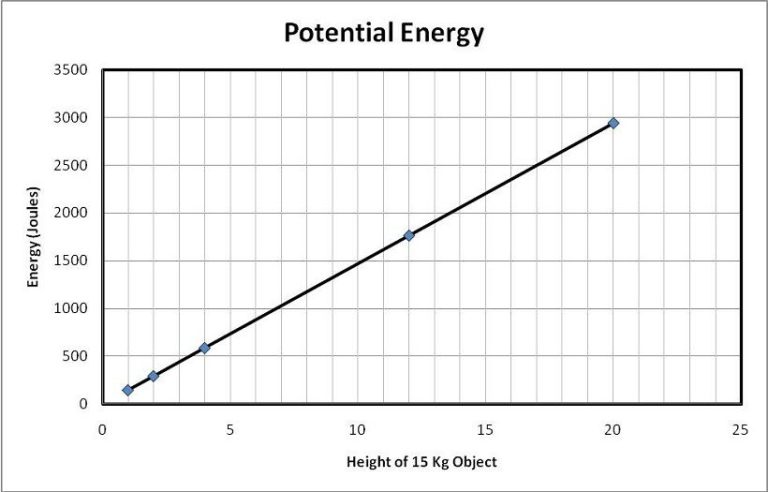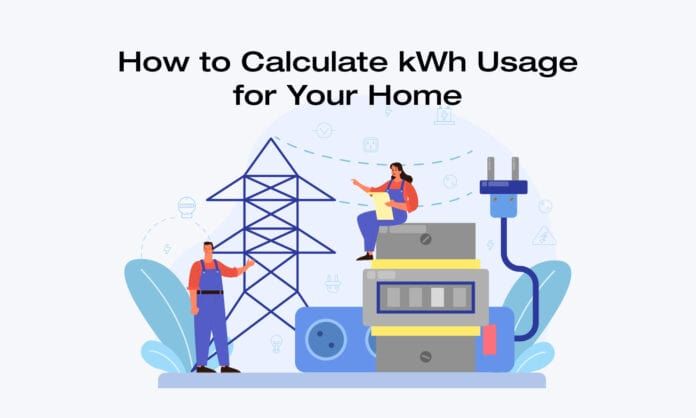What Is The Electric Energy Per Charge Called?
Introducing Electric Potential
Electric potential is the electric potential energy per unit charge. It represents the amount of electric potential energy that a unit charge would have if located at a specific point within an electric field. Electric potential is commonly represented by the variable V and its units are joules per coulomb (J/C). The concept of electric potential allows us to easily calculate the potential energy stored in an electric field, since we can simply multiply the charge by the potential at its location.
Electric potential energy results from the presence of electric charges and their separation in space. Charges that are separated produce an electric field, which stores energy. When multiple charges are present, the electric potential represents the energy stored per unit charge at a specific location. The greater the electric potential, the more potential energy a unit charge would have. Therefore, electric potential and electric potential energy are closely related. By defining this electric potential function, we can easily calculate electric potentials and electric potential energies in different electric field configurations.
Units of Electric Potential
Electric potential is measured in units of volts (V). The volt is the standard unit of electric potential difference and electromotive force. One volt is defined as the electric potential difference between two points in a static electric field where one coulomb of charge would have one joule of potential energy. Since electric potential is essentially a measure of electric potential energy per unit charge, it makes sense that it is measured in volts. The volt represents the amount of electric potential energy gained or lost when one coulomb of charge moves between two points. So in summary, electric potential is quantified using the volt as the unit of measurement in order to describe the amount of potential energy contained per unit charge at a given point in an electric field.
Electric Potential and Voltage
Electric potential and voltage are closely related concepts in physics and electricity. While they are different quantities, they both deal with the work per charge done by electric forces.
Electric potential, also called voltage, is a scalar quantity that measures the amount of potential energy per unit charge at a specific location due to an electric field. It represents the amount of work needed to move a positive test charge from a reference point to a specific point inside the electric field without causing acceleration. The units of electric potential are volts.
Voltage, on the other hand, is the difference in electric potential between two points in space. It measures the “push” that causes current to flow between two points in a circuit. The volt is also the standard unit used to measure voltage.
To summarize:
- Electric potential is the work per unit charge at a single point due to an electric field.
- Voltage is the difference in electric potential between two points.
While they represent different quantities, electric potential and voltage are directly proportional. A greater electric potential leads to a greater voltage. Changes in one also cause changes in the other. They both represent the work per charge done by electric forces.
Calculating Electric Potential
The electric potential V at a point P due to a point charge Q is calculated using the following equation:
V = kQ/r
Where:
- V is the electric potential in volts (V)
- k is the Coulomb’s constant, equal to 8.99 x 109 Nm2/C2
- Q is the charge in coulombs (C)
- r is the distance from the point charge Q to the point P where the potential is being calculated, in meters (m)
This equation shows that the electric potential V is directly proportional to the charge Q, and inversely proportional to the distance r from the charge. The greater the charge Q, the greater the electric potential V at a given distance r. And the smaller the distance r from the charge Q, the greater the electric potential V.
To calculate electric potential, the charge Q and distance r need to be known. Electric potential will be greatest when closest to the charge Q, and will decrease as distance from the charge increases.
Electric Potential Energy
Electric potential energy is the potential energy stored in a charge located at a certain position in an electric field. It arises due to the interaction between a charge and the electric field at that point. Electric potential energy is directly related to both the electric potential and the position of the charge.
The electric potential energy U of a charge q at position r in an electric field E is given by:
U = qV
Where V is the electric potential at that point. The electric potential V is related to the electric field E by:
V = -∫E⋅dr
Therefore, the electric potential energy can also be expressed as:
U = -q∫E⋅dr
This shows that the electric potential energy depends on both the charge q and the electric field E along the path from a reference point to the position r. A charge will have greater electric potential energy if it is in a region of higher electric potential or field strength.
As a charge moves through an electric field, its electric potential energy will change. If the charge moves from a region of high potential to low potential, it will lose electric potential energy, which can be converted to kinetic energy. This is the operating principle behind many electrical generators.
Comparing Electric Potential
When comparing electric potential at different points, there is a standard convention used:
- The electric potential is zero at infinity.
- If a point A is at a higher electric potential than point B, then the electric potential at point A is positive relative to point B.
- If point B has a higher electric potential than point A, then the electric potential at point B is negative relative to point A.
- The greater the difference in electric potential between two points, the greater the voltage that can be measured between those points.
This convention allows us to quantitatively compare the electric potential at any two points in space. The potential is lower at infinity than any other finite point, so the potential at infinity serves as a convenient zero level. Potentials at other points can then be ranked relative to infinity, with the most positive potential having the greatest separation from zero at infinity.
Electric Potential and Electric Field
The electric potential and electric field are closely related concepts in electromagnetism. While electric potential measures the potential energy per unit charge at a given point, the electric field represents the force per unit charge that a charged particle experiences at that point.
The relationship between electric potential and electric field can be described mathematically. The electric field E is defined as the negative gradient of the electric potential V. This means that the electric field at any point is proportional to the slope of the electric potential function at that point.
Mathematically:
E = -dV/dx
Where E is the electric field vector and dV/dx is the gradient of the electric potential function V. The minus sign reflects the fact that the electric field points in the direction of decreasing potential.
This equation shows that if the electric potential has a steep slope at a point, the electric field strength will be large there. And conversely, where the electric potential is relatively constant, the electric field will be small.
The relationship between electric potential and field provides an important connection between electrostatics and electrodynamics. While electric potential is a scalar quantity, the electric field is a vector quantity that describes the precise magnitude and direction of the force acting on a charged particle.
Understanding this link between potential and field helps provide a unified view of electromagnetic effects and allows calculations of one quantity based on the other.
Equipotential Surfaces
An equipotential surface is a surface on which every point has the same electric potential. In other words, it is a surface along which the electric potential is constant. Equipotential surfaces always run perpendicular to the electric field lines.
Some common examples of equipotential surfaces include:
- The surface of a charged conducting sphere, where the electric potential is the same everywhere on the surface.
- Concentric spherical surfaces around a point charge, where each sphere has a different constant potential.
- The parallel plates of a charged capacitor, where the potential is constant across each plate.
Equipotential surfaces help map the electric potential in space. The spacing between the surfaces indicates the strength of the electric field – surfaces that are close together represent a strong electric field, while those far apart indicate a weaker field.
Equipotential surfaces are useful for determining the electric potential at different points in space and for visualizing how charges will move in an electric field. Charges naturally move from regions of high potential to low potential, so the equipotential lines can show the path a charge will follow.
Applications of Electric Potential
Electric potential has many practical uses and real-world applications. Here are a few examples:
Batteries – Batteries use chemical reactions to create a potential difference between the positive and negative terminals. This potential difference causes current to flow through an external circuit.
Power transmission – High voltage power lines are used to transmit electricity over long distances. The high potential difference allows large amounts of power to be transmitted efficiently.
Electrostatic painting/coating – Applying a high voltage to a nozzle creates an electric field that draws paint/coating material to the surface being painted. The electric potential allows an even and consistent coat.
Photocopiers – Photocopiers use electric potentials to transfer toner particles to paper. The charged drum picks up toner particles and transfers them to paper in the shape of the image being copied.
Defibrillators – Defibrillators apply a large electric potential to a patient’s chest to restore normal heart rhythm during cardiac arrest. The electric shock momentarily stuns the heart and stops arrhythmic beating.
Neon signs – Electric potential excites neon gas, causing it to glow. Neon signs operate by applying high voltage to electrodes inside neon tube glass.
Static electricity – Static buildup is caused by contact and separation of surfaces, creating electric potential difference. This can cause sparks or small shocks when discharge occurs.
Summary
Electric potential is a measure of the amount of potential energy per unit charge at a point in an electric field. It represents the amount of work needed to move a unit of positive charge from a reference point to a point of interest in an electric field. The unit of electric potential is the volt.
Electric potential is closely related to voltage, which refers to the difference in electric potential between two points in a circuit. The greater the electric potential at a point, the higher the voltage. Calculating electric potential involves determining the electric field strength and the distance over which the field acts. Electric potential energy represents the potential energy stored in the electric field. Equipotential surfaces connect points of equal electric potential. Electric potential has many applications, from designing safe electrical systems to understanding nerve cell signaling.
In summary, electric potential is a foundational concept in electrical engineering and physics. It provides a measure of the electric field strength at a point and enables calculating key electrical properties like voltage. Understanding electric potential is critical for designing, operating, and analyzing electrical circuits and systems.





